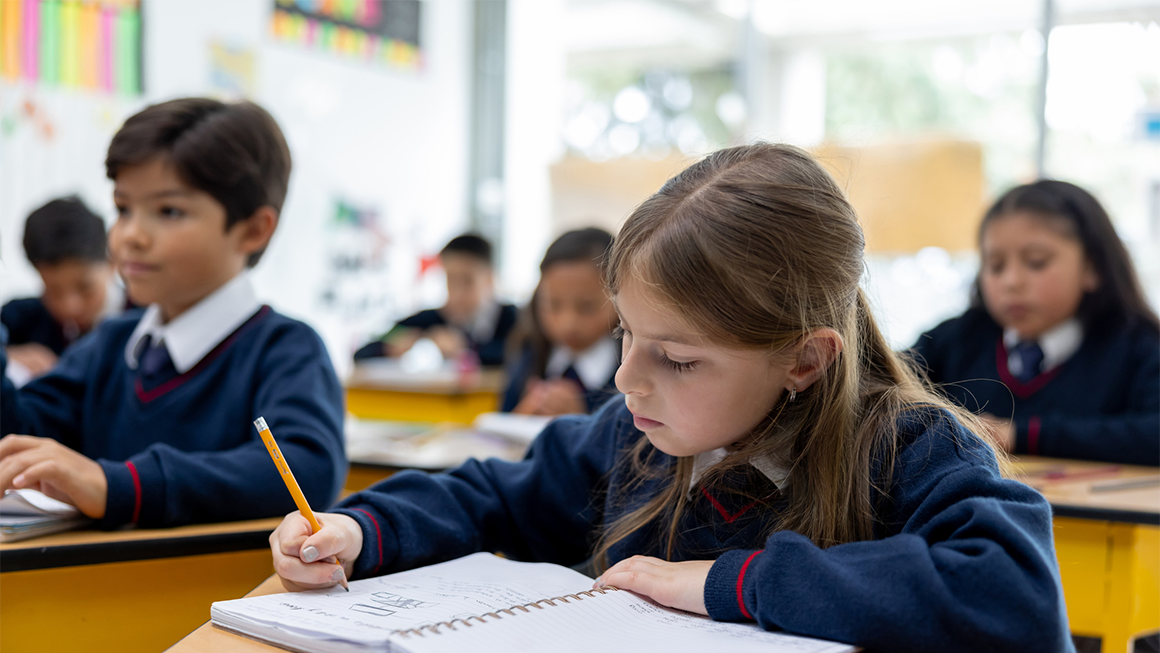
The proposed reconciliation package, the One Big Beautiful Bill Act, could signal a substantial shift in federal K–12 education policy. Historically, most federal K–12 education investment has gone toward supporting specific student needs, such as students from families with low incomes, those with special needs, and those in rural schools.
However, a new proposal in the reconciliation bill would change this paradigm. Rather than targeting specific student needs, the House-passed reconciliation bill would divert up to $5 billion in tax dollars annually ($4 billion in the Senate proposal) to support roughly 1 million students to enroll in private school or pay for additional educational supports.
As policymakers work to get a final bill to the president’s desk, federal policymakers should weigh the sizable per student cost against the known benefits of existing more-targeted federal programs.
Current federal investments in K–12 education
The federal tax credit scholarship proposal in the reconciliation bill does not target specific student populations or schools in the same way as current federal investments. Although families in roughly the top income decile are ineligible for scholarships, analyses of the proposal from the Urban Institute and from Brookings Institution indicate the program will be tilted toward higher-income families and would put rural students at a substantial disadvantage in terms of accessing funds for private education.
Currently, most federal investments in K–12 education provide support for specific student populations, such as students from families with low incomes (Title I, $15.6 billion [PDF], and free school meals, $17.2 billion) and students with special needs (Individuals with Disabilities Education Act, $12.9 billion [PDF]).
In a crisis, such as the COVID-19 pandemic, the federal government does tend to allocate temporary funds to K–12 education but still strongly considers need. For example, districts with more than 75 percent of students eligible for free school meals received more than $6,000 per student on average in federal pandemic relief, compared with around $1,350 per student for districts where less than 25 percent of students were eligible.
Smaller amounts of money are also allocated for specific school needs, such as school districts located on federal lands or tribal lands that do not have a local property tax base (Impact Aid, $1.7 billion [PDF]), rural schools ($0.2 billion), and magnet schools aimed at desegregating public schools ($0.09 billion).
The reconciliation proposal would mark a shift in federal K–12 education policy
The proposal in the reconciliation bill would divert up to $5 billion in tax dollars per year for an estimated 1 million students supported by nonprofit scholarship granting organizations (SGOs). This framework closely aligns with the previously proposed Educational Choice for Children Act. Estimates from the Joint Committee on Taxation suggest the full amount of the tax credit will be used.
Although SGOs may fund other educational activities, evidence from stateprograms (PDF) suggests most of the spending will go toward private school tuition. Private school choice programs vary in implementation and in how they may affect student achievement. Broadly, private choice programs, particularly those aimed at supporting students from families with low incomes, are correlated with lower test scores, but students appear more likely to enroll in college and attain a four-year degree.
Outcomes for this federal proposal may differ, as the scholarships are not aimed only at families with low incomes and because there is little oversight of the quality of programs and schools that may be supported. Further, there is evidence that in voucher programs where most or all families are eligible, many of the participants were already enrolled (PDF) in private school.
In sum, meaningful gains for students enrolled in these programs are possible, but the per-student costs to the federal government could be substantial. As written, the program likely would allocate more than twice as much money per student (PDF) served as other large federal programs.
Over the past decade, federal funding has constituted slightly less than 10 percent of overall revenue for K–12 education. Among the federal programs that do exist, most provide targeted support to students from families with low incomes, those experiencing homelessness, those with disabilities, or those who have other specific needs.
By diverting tax dollars to serve a small number of students at a substantial per student cost, this untargeted policy may not represent the most efficient use of federal dollars. Research indicates that increasing funding on a scale similar to Title I (a 10 percent increase in per pupil spending over 12 years of education) would lead to a more than 7 percent increase in wages (with higher increases for students from low-income families). And access to free school meals, particularly healthier school meals, is associated with substantial improvements in academic performance and other outcomes.
As policymakers continue to deliberate the reconciliation bill, they should consider to what extent tax credit–backed SGOs—which would be largely immune from federal oversight and evaluation—might yield benefits in line with other historic sources of federal K–12 funding.
Let’s build a future where everyone, everywhere has the opportunity and power to thrive
Urban is more determined than ever to partner with changemakers to unlock opportunities that give people across the country a fair shot at reaching their fullest potential. Invest in Urban to power this type of work.